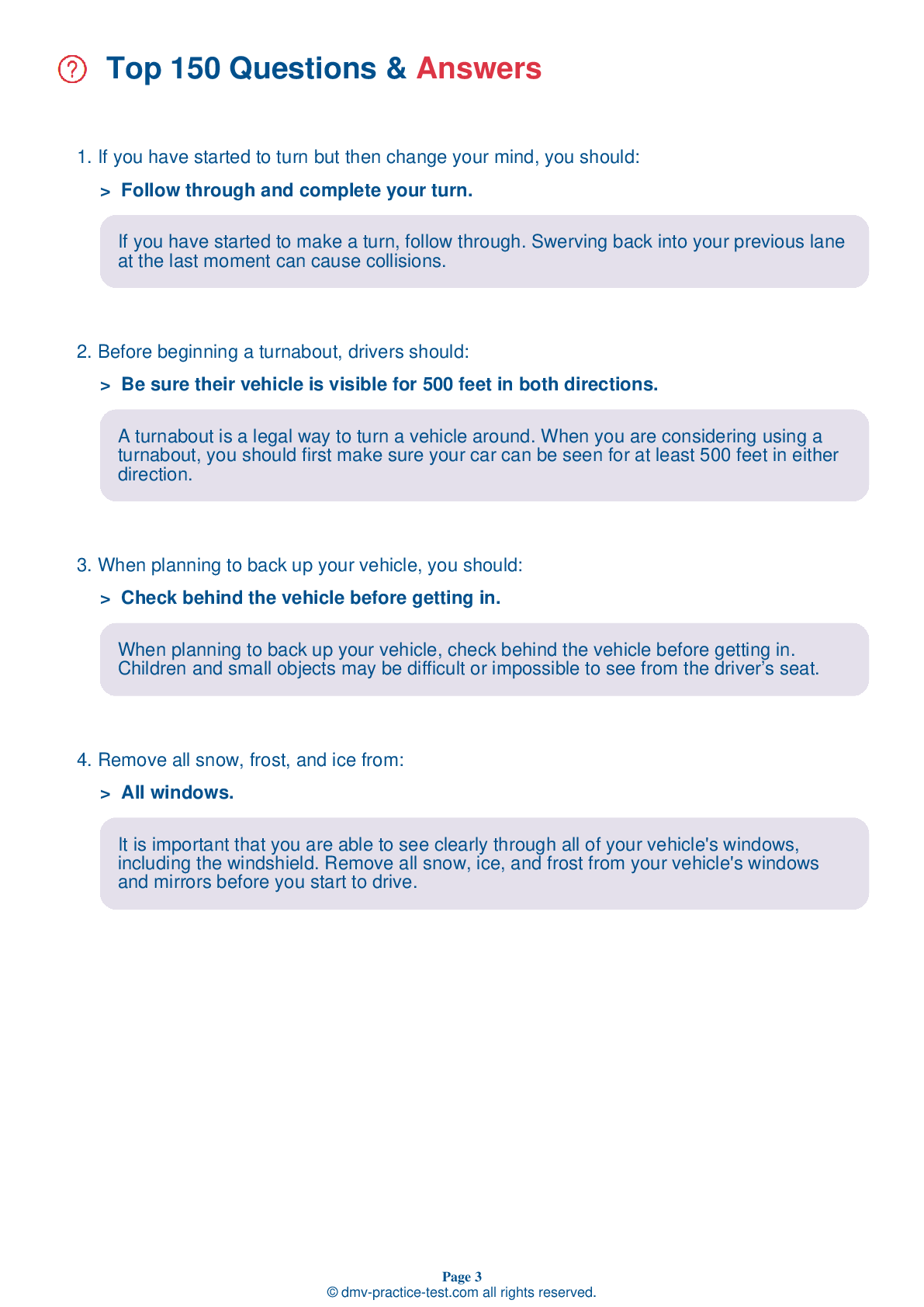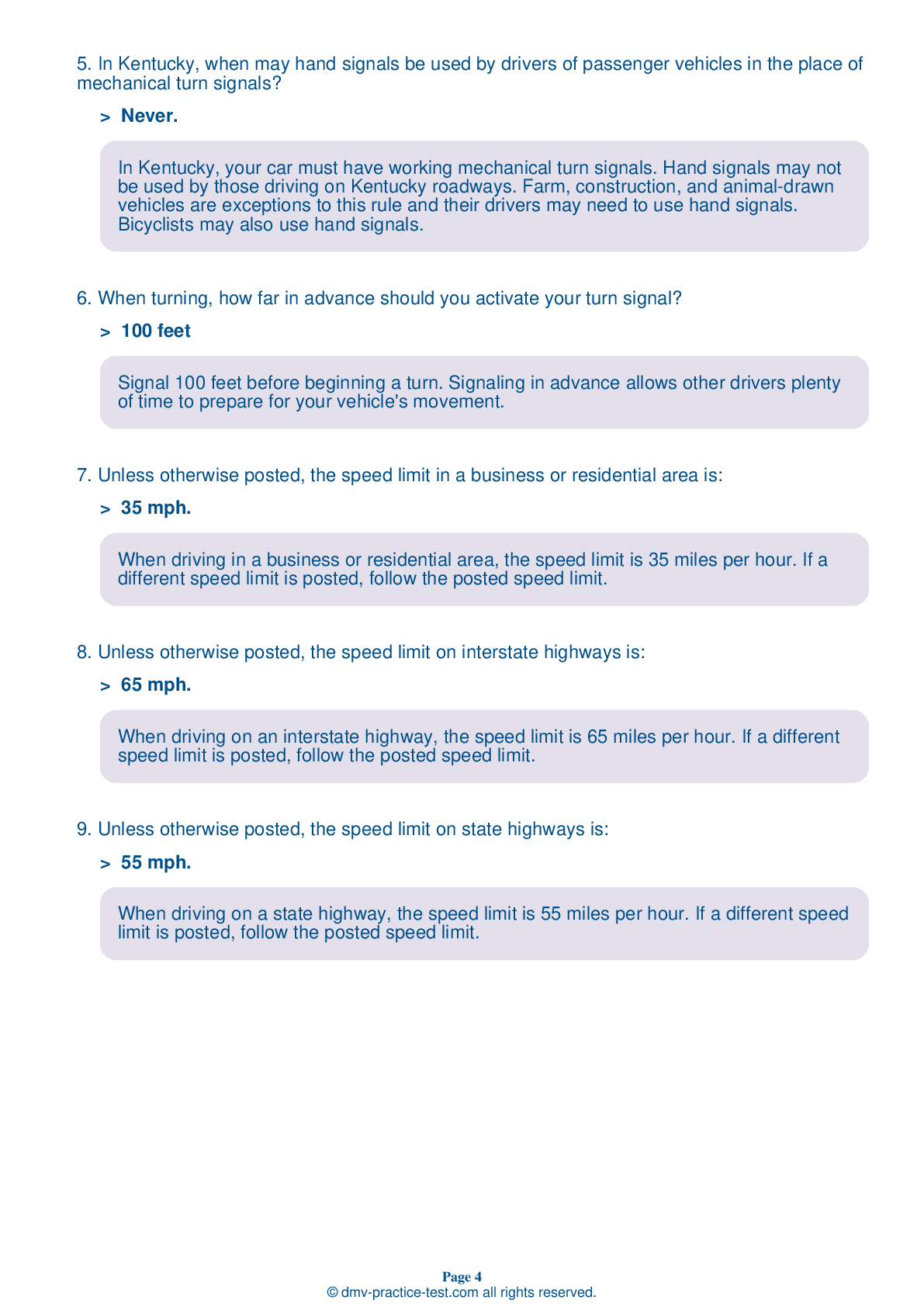FREE Kentucky DMV Practice Test #15
The DMV practise tests in Kentucky have been updated for January 2025. It comprises questions based on the most important traffic signals and laws for 2025 from the KentuckyDriver Handbook. To study for the DMV driving permit test and driver's licence exam, use actual questions that are very similar (often identical!) to the DMV driving permit test and driver's licence exam.
Each question on the practise exam has a tip and explanation to help you recall the ideas. Questions about traffic rules, traffic signs, and driving statutes, as well as knowledge from the Driver Handbook, will be included in the written portion of the official Kentucky DMV test.
You must properly answer 32 of the 40 questions to receive a passing mark. To help you prepare for your Kentucky instruction permit or driver's licence, take our DMV practise test.
The DMV exam is offered in a variety of languages.
Using any form of testing help will result in an automatic fail, and the DMV may take further action against your driver's licence, so avoid it.
1 . What should a driver do when approaching a traffic control signal that is not in operation?
When traffic control signals are not working, a driver must always treat the intersection as an all-way stop and come to a complete stop, unless otherwise directed by law enforcement. The driver must then look and yield the right-of-way before entering the intersection.
2 . Stopping distances and severity of crashes:
Stopping distances are longer and crashes are more severe when traffic travels at higher speeds.
3 . You are approaching a green traffic light and traffic is blocking the intersection. What is the best thing to do?
Even if your light is green, you must not enter an intersection unless you can get completely through the intersection before the light turns red. If you block the intersection, you can be cited.
4 . An orange and red triangular sign on a vehicle always means:
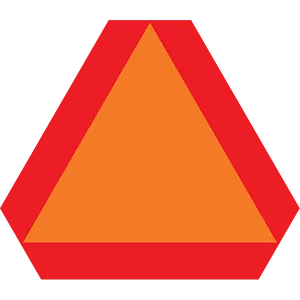
Slow-moving vehicles, such as farm tractors, road maintenance vehicles, and animal-drawn carts, display an orange and red triangle on the back.
5 . When driving in work zones, you should:
When driving in a work zone, keep a safe distance between your vehicle and traffic barriers, trucks, construction equipment, workers, and other vehicles. Increase your following distance and do not tailgate.
6 . This road sign means:
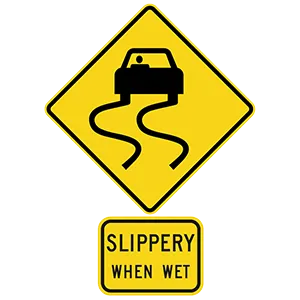
Warning signs are usually yellow with black markings. This sign warns drivers that the roadway will be slippery when wet and they should reduce their speed accordingly.
7 . If a motorist sees pedestrians in an upcoming crosswalk, what should the motorist do?
A driver must yield the right-of-way to a pedestrian within a crosswalk. The driver should wait until the intersection is clear to proceed.
8 . This sign means you are approaching a railroad crossing that does not have a signal. You should:
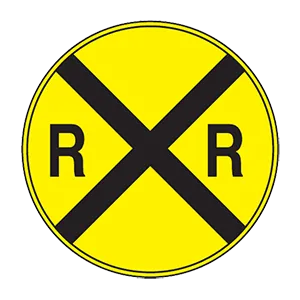
At a railroad crossing marked with this sign, a driver should look both ways, listen for any trains, and be prepared to stop if any trains are nearby. Never try to outdrive an oncoming train.
See the exact questions that will be on the 2025 Kentucky DMV exam.
99.2% of people who use the cheat sheet pass the FIRST TIME
LT gives us an insight on how the cheat sheet provided her with all the study questions she needed before taking her test.
Joe initially studied with the handbook and failed his test, he eventually found us online, studied and pass his test the first time around.

